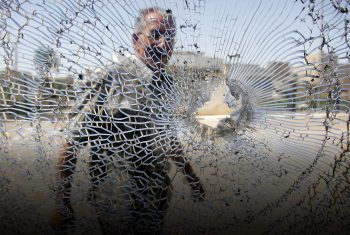
 July 30, 2014 • Analysis •
July 30, 2014 • Analysis •
As in many other places, political Islam grows in Azerbaijan, both in its Sunni and Shia versions. There is undoubtedly here an Azerbaijani specificity. Representing something like 35% of the population, the Sunnis today appear to be the most active and well-organized. That paper intends to shed light on Sunni salafist developments in Azerbaijan over the past decade. It argues that salafist maturation has been mainly locally managed without however being able to prevent the internal rise of the more radical and violent Jihadi line. It questions finally whether salafism has ever constituted a threat in the country.
Azerbaijan is a secular state with an overwhelmingly moderate Muslim population. Among those people, it is usually said that Shia predominate but no one really knows by how much as it does not exist yet any exact and reliable figures of religious affiliations within the society. Building on various objective estimations, the proportion Shia/Sunni appears to reach a 65%-35% level. The authorities themselves are not really interested into those figures, as they are steadily playing down the differences between Sunni and Shia Islam and are trying to find ways to unite the different sects within Islam. A few Shia but mostly Sunni groups have emerged which refuse the spiritual authority of the official clergy. Azerbaijani Sunnis however are by far the most active, mobilized and visible groups. Within Sunnism, the Salafist orientation, whose militant proponents associate with the earliest followers of the Prophet, only represents one trend among more moderate others.
That paper details Sunni salafist developments in Azerbaijan over the past decade. It argues that salafist maturation has been mainly locally managed but could not prevent the internal rise of the more radical and violent Jihadi line. It questions consequently whether salafism has ever constituted a threat in the country. The first section recalls the general framing of salafism in Azerbaijan, clarifying history and explaining its radicalization. A second section tries then to categorize contemporary Azerbaijani salafism, while a third and last one particularly highlights the current Salafist jihadist path, including its interactions with the Caucasus Emirate and the war in Syria.
That research relies on a field work undertaken by the author for a major International Non-Governmental Organization in December 2012. That operational bias provided the opportunity to go as close as possible to some salafist practitioners in various mosques of Baku, i.e Abu Bakr Mosque, the “Lezgin Mosque” and the “Turkish Mosque”, as micro-approach is preferred in that case by the NGOs. Individuals – their choice, their representations and their ideas – matter. Priority is clearly given to a bottom-up perspective singling out experts (or involved activists) and focusing on their stories of reality. That gives to that research an assumed constructivist bias, avoiding thus a too general perspective.
Concretely, meetings started with a formal discussion with the official or unofficial head of the visited Mosque at the time of the prayers for all the three mentioned mosques. In Abu Bakr and the Lezgin Mosque, it was possible afterwards to facilitate several informal interviews with random present parishioners. Those mosques were visited respectively two and four times. The Turkish Mosque proved to be less welcoming and was visited only once. In Sumgayt, no one was available at the Arab Mosque. All discussions were held in Russian (without translator) and none has been recorded in order to reach quickly more spontaneity in the exchanges. In total, a dozen of persons for the whole three selected mosques, most of them anonymous, have been given questions. To frame the research and up-date the background, experts have been solicited.
That most recent research completes many previous field works on similar or close topics, such as Chechen refugees’ networks. They have been conducted in Baku every two or three years since 2003 and are substantially helping to better assess the lastly collected interviews. The present investigation also builds on the existing academic literature whose main titles are listed in a joint bibliography. Among them, Bayram Balci’s regular talks and papers on Islamic issues, quite often associated with Altay Goyushov, as well as the more occasional International Crisis Group reports, prove to be the most valuable resources for their accuracy and detailed approach.
